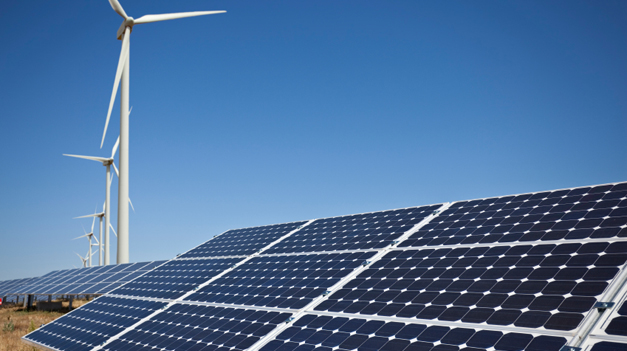
Against a background of diminishing fossil-fuel reserves, rising energy costs and more stringent CO2 emissions targets, many housing associations across the UK are increasingly interested in the idea of investing in renewable energy. Until now, many social landlords have been put off by prohibitive costs, but that looks set to change following the introduction of ‘Feed-in-Tariffs’ (FiTs), which guarantee a fixed, premium rate for renewable electricity fed into the national grid.
Through FiTs the government hopes to encourage low-carbon electricity generation, particularly by organisations, businesses, communities and individuals not traditionally engaged in the electricity market. Under the scheme, which started in April this year, the ‘pay-back’ period for investments in sustainable energy has significantly reduced, meaning that profits can be made much sooner.
“This ‘profit’ can be reinvested either in further sustainable improvements to properties or in reducing energy costs for tenants. The energy produced can [also] be used by tenants or used to reduce energy bills,” says Eugene Wilson, Director of Property Services at Rochdale Boroughwide Housing (RBH).
Projects – current and planned
Several such projects are already underway, with more planned to commence soon. In Manchester, the Horizon Energy Cooperative Microgrid aims to deliver renewable energy from social housing by developing a ‘virtual power plant’ from renewable energy sources across Greater Manchester and selling the energy to the national grid. Profits will be used to fight fuel poverty, stimulate training and jobs and assist the delivery of the Greater Manchester Low Carbon Economic Area.
“We decided to get involved in order to assist in supporting low carbon economic growth in the region and invest in renewable technologies for the benefit of its residents,” says Tony Hodge, Maintenance Systems Manager at project partner Guinness Northern Counties.
“The co-operative provides an opportunity to work collaboratively, to share knowledge and best practice and aggregate our purchasing power,” he adds.
In Northern Ireland, a project led by Kellys Renewable Energy Solutions will design and install solar hot water systems in a new 29 unit Social Housing development in Canal Street, Newry as part of the third and final phase of the high profile Canal Street Regeneration Strategy.
Meanwhile, a joint ScottishPower and Lister Housing Co-operative project has installed solar water heating in 49 households in central Edinburgh. South Yorkshire Housing Association also plans to fit solar-electric systems on up to 400 of its social housing properties in the North of England.
Another large scale scheme, due to be rolled-out across the UK, is green service company Eaga’s new Clean Energy Programme, which plans to install solar systems for social housing tenants – at no cost to them and requiring no investment from the landlord.
The view from the street
As such projects become more common, how will tenants react to the new developments and adapt to using the new technology? According to Joe Keating, Environmental Projects Surveyor at Stockport Homes, the installation of renewable technologies sends a very positive message to tenants.
“Along with contributing to climate control [and] addressing fuel poverty, it also stimulates the ‘green’ industry. I am sure customers will see and feel the benefits these technologies can bring as their energy bills will go down,” he says.
Another key point is that the installation of technology in properties may not in itself provide the solution to the problem of high energy costs and fuel poverty. In particular, it is vital that tenants are educated in the proper use of the new technology and convinced of the benefits, and potentially savings on energy bills, of changing their habits.
“[Simply] installing technology and [allowing] tenants to continue with their ‘old’ practices will not maximise the energy savings for tenants,” says Wilson.
“I’m certain that with the right levels of discussion with tenants before any installations, and sufficient instruction and support after installation, tenants will be able to cope with new technologies and maximise the benefits,” he adds.
The introduction of FiTs looks set to promote a significant increase in the number of social landlords taking the plunge and deciding to invest in renewables. As long as such schemes continue to enjoy much needed government support, social housing developments that are also net energy producers may become an increasingly common sight.







